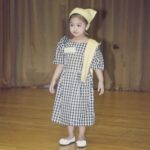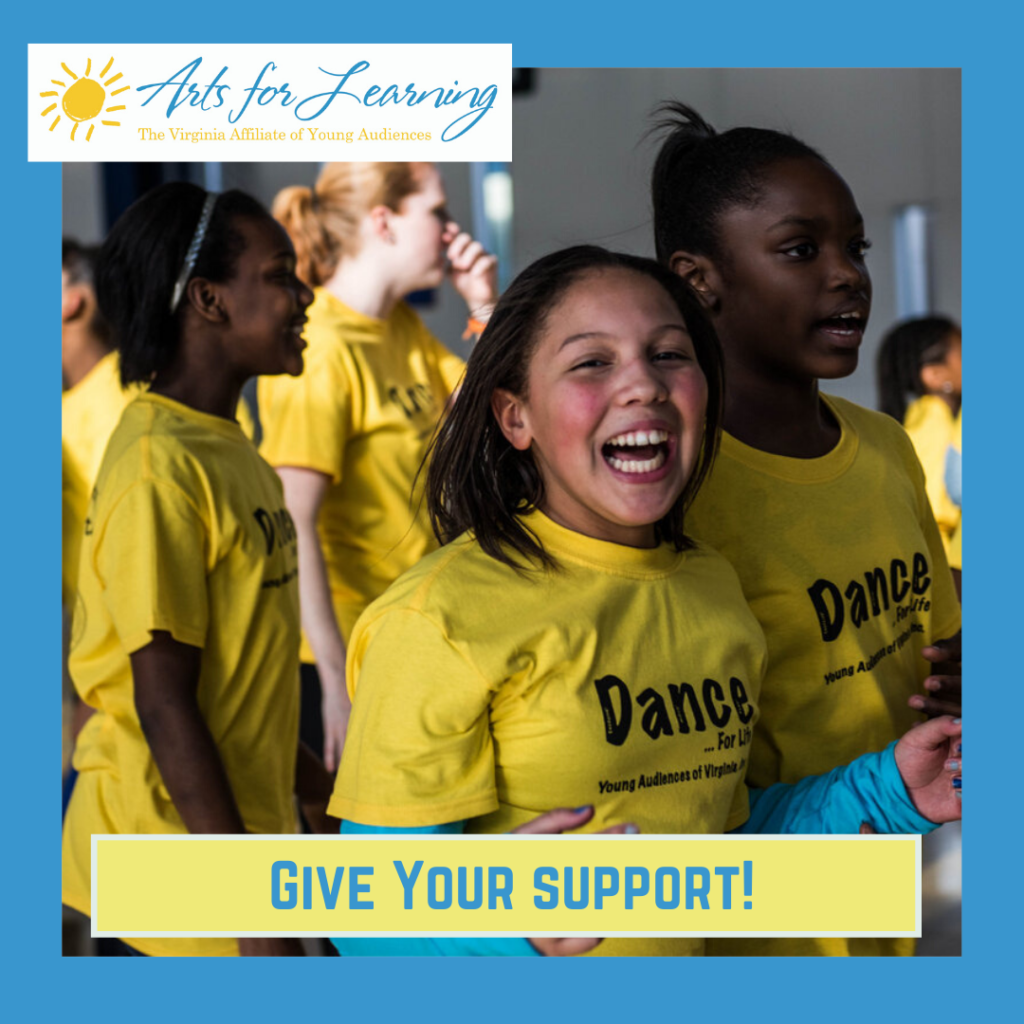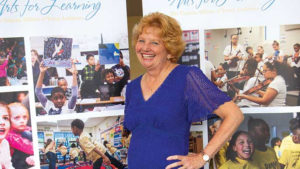
Three years ago this month, Young Audiences of Virginia became known as Arts for Learning, a change announced to better reflect our mission as part of our nonprofit’s 65th anniversary celebration. We’re also celebrating another anniversary this year—Chris Everly became CEO five years ago in February.
Chris came to A4L after retiring from a 30-year career at Bank of America where she held several executive positions in the areas of credit and operational risk. In this “second act” at A4L, she uses her business acumen to lead an organization that combines two of her passions: helping children, especially those who are disabled or disadvantaged, and the arts. Chris received both her B.S. in Business Administration and her MBA from Temple University in her hometown of Philadelphia.
 A resident of Virginia Beach, Chris and her husband John are the parents of two adult children. They adopted Katrina (nine months old) in May 1993 and Peter (two-and-a-half years old) in September 1993 from Russia. Katrina loves children and animals and has worked in jobs helping each. Peter works as a scenic artist for a repertory theater in Florida.
A resident of Virginia Beach, Chris and her husband John are the parents of two adult children. They adopted Katrina (nine months old) in May 1993 and Peter (two-and-a-half years old) in September 1993 from Russia. Katrina loves children and animals and has worked in jobs helping each. Peter works as a scenic artist for a repertory theater in Florida.
In this interview, Chris reflects on her time leading Arts for Learning, the premier arts-in-education organization in Virginia.
You’ve talked about your children having learning struggles when they were younger. How do you think the arts would have helped them?
“With hindsight we could have done more to actively engage them in the arts beyond taking them to art museums or concerts. For example, I didn’t focus on getting them piano lessons even though we have a piano because I was more worried about scheduling after-school reading enrichment lessons than playing the piano. We were so focused upon mastering the core academics. We knew all the statistics about kids not reading at grade level and what the future held for them. We were trying to do anything we could to give them a strong foundation for academic success. Greater involvement in the arts would have helped both of them with their self-esteem, confidence, and social interactions.
“It wasn’t easy for us or the children to cope with having learning differences, and so if I have the opportunity to encourage other parents who might be struggling to do the right thing for their child, I tell them I believe that giving them opportunities for active engagement with the arts is just as important as giving them a reading tutor.”
Peter eventually found his way to a career in the arts. How did that happen?
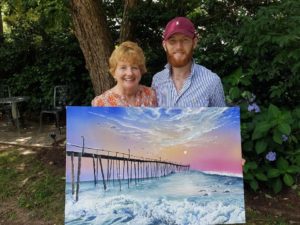
“When Peter was in high school, he wasn’t sure what he wanted to do as a career or what to study in college. He’d heard about the Conservatory at Shenandoah University, so we arranged a tour. The admission director noticed his interest in scenic lighting and design and suggested he apply for that major. So even though I knew he had excellent visual art skills and a strong interest in design and building work, I’d never thought of it as something he could do as a career and be successful. The director, in fifteen minutes, figured out something that I should have considered before.
“I think the arts and being around other artists have helped his self-esteem and his confidence in his ability to master something new or difficult. Involvement with the arts has led to him being more open with other people and expressing curiosity. He was very shy when he was younger, but now he enjoys talking with anyone about anything. The arts filled a void in him that I didn’t understand how to help him address.”
If you were to tell someone why the arts matter, what would you say?
“I think the arts is a great equalizer. It’s a universal language with tremendous social-emotional benefits. At one time I would have minimized that. Now I fully understand, having had the opportunity to watch children participate in our programs and hear stories that our staff brings back about the power of the arts to make a difference.”
When you were first hired as CEO, what did you expect? Have there been surprises?
“I had been on three nonprofit boards in the past, so I’d had exposure to governance and interacting with paid staff, but I don’t think I fully appreciated all that would be asked of me as executive director, how much of a business it really is and how you have to think of it as a business. Our mission is to inspire and engage, but there are a lot of different things that need to be in place behind that—technology systems, finance, all of the requirements for grants. Besides the ‘aha’ of what a difference the arts can make in the lives of children in ways I didn’t fully appreciate before—any child—I think I didn’t realize how much is involved behind the scenes in terms of administrative work that needs to be done to make the arts possible.

“One thing I learned from banking that I brought to this job is an understanding that relationships are everything—how you deal with all the different stakeholders and how they all need something different from you. You have to learn what’s important to them and respond appropriately.
“I’ve enjoyed great support and encouragement from the board of directors. A lot of executive directors struggle with their relationship with the board, who you’re working for. But that’s always one thing that has gone well, and I’m grateful for their dedication to our mission.”
What has been the biggest challenge during your first five years?
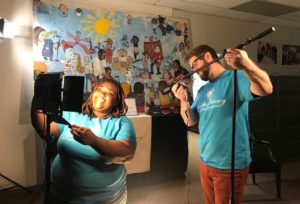
“The pandemic upended everything for everybody. It was important to keep everybody on an even keel with the belief that somehow, someway, we would figure it out. Thanks to the creativity of the staff when schools were shut down, we produced ‘Take 10’ videos, short segments by our artists for families to watch at home with their children. It was the right thing to do—it gave artists the opportunity to practice their art form when normal opportunities weren’t available to them, so it fulfilled a need.
“At the bank, I was very involved in the commercial and residential real estate market, so I went through a lot of real estate cycles. And I realized eventually it does work out, so that gave me a little bit more confidence to say, ‘I don’t know how we’re going to do this, but if we work together as a team, we’re going to figure it out.’ That’s one advantage of being older. Having the perspective that things would work out meant there was no need to panic.”
What has been your biggest achievement?
“Our greatest achievement in the past five years is the way we’ve grown and adapted to the circumstances. We didn’t always know it would turn out well, but we deliberately took some risks, after careful consideration, that proved to be the right approach. Sometimes we had Plan A and then quickly had to switch to Plan B and it was finally Plan C or D we implemented.
“I’m really proud of the staff and how everyone who has worked here, even the ones who have left, have left the organization better in some way. We’ve had the right people in place at the right time.”
Where would you like to see Arts for Learning in five years?
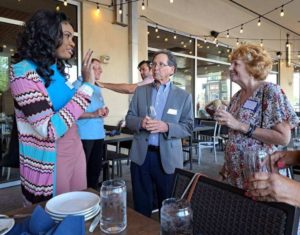
“I’d like to see us do more work outside of coastal Virginia. It would be good to figure out ways to expand our influence further outward in the state. We were getting ready to do more of that and then the pandemic hit. Now that we’re coming out of that and have built up our staff, it’s enabled us to seek out new opportunities and new relationships with other nonprofits. I think we’re focusing more on the greater community than we were able to do before and sharpening our focus upon how to best reach underserved children.
“We also want to continue to grow our board. It’s important that we have a diverse board, which I think we’ve done a pretty good job of building, but we need to look at how we continue to engage them and bring in new people as donors and volunteers.”
How have you grown as an individual in the five years you’ve served as CEO?
“I think it’s helped me be much more engaged in the larger community, raised my awareness and knowledge about social issues, and deepened my commitment to help change injustices and inequality. I’m a great believer in the importance of continuing to learn and challenging yourself through all the seasons of life. I love how this position exposes me to new ideas and a wide range of people with vastly different life experiences.
“I used to be quite reserved and shied away from asking people for money and from public speaking. But the organization is depending on me, so I’ve had to come through. I need to be the organization’s biggest cheerleader and spread the word about supporting our mission. I was actually a marketing major as an undergraduate, and that’s what I’d hoped to do. I get to do marketing all the time now, but in ways I never envisioned. Life’s come full circle.”


